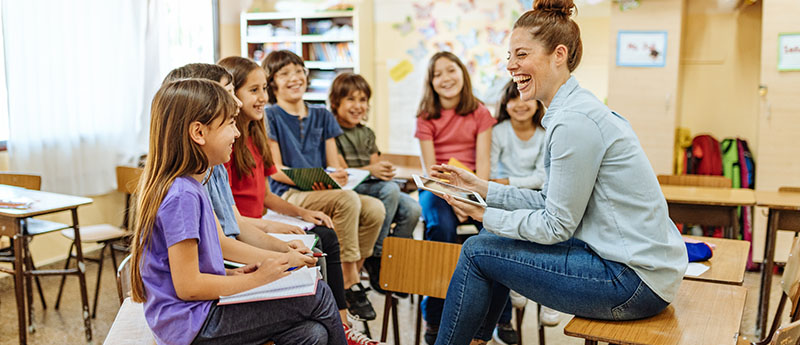For some students, the return to familiar school buildings and classrooms has been a welcome relief from isolation at home. For others, returning to school—perhaps to new classrooms or even new schools—has been filled with new anxieties and fears.
Data show that students are experiencing emotional and behavioral issues at higher rates than when the pandemic response began in Spring 2020. Helping the school community to return to a place of predictability and consistency is a crucial part of supporting students, families, and staff as we all gain distance from the long academic and instructional interruptions of the past 20 months.
Teachers, therapists, and school administrators can help smooth rough transitions by acknowledging all that has happened and providing opportunities for students to share feelings and to reflect on their experiences.
It is important for educators to recognize that a student’s reactions may be rooted in some measure of trauma. Responding with empathy helps to show the student that they are understood and respected, and helps to build trust. While it’s always good to pay attention to non-verbal cues, educators should ask direct open-ended questions to invite students to share what’s on their minds. For example: asking “What is it about today that’s been different or harder for you than yesterday?” will generate more student engagement than “It looks like you you’re having a bad day. Is that true?” For student with language-based learning challenges, providing prompts or suggesting options may help, asking for example: “It looks like you are feeling frustrated, angry or nervous about something?”
If a student’s behavior has become challenging, try to set aside your own feelings and let the student’s reactions be the subject of the conversation. Doing so does not mean accepting the student’s behavior. Instead, try to understand the student’s responses through their own perspective as they see them. Try to avoid “you” statements that can make the student feel defensive. If you must talk about the wider effects of their behavior, try representing the effects using “I” statements, for example: “I think that other students may have felt hurt or scared when you…” Doing so does allows you to acknowledge your own feelings without placing blame directly, and may give the student the opportunity to recognize yours and other students’ feelings.
Actively listen and attend to the student’s words, tone of voice, and body language. It can be helpful to pause before responding to what you’ve heard. Thinking through what you think the student has told you and repeating it back to them can increase trust and give the student a chance to correct or clarify what they have said. Once you understand a problem from the student’s perspective, you will be better able to put the student in the driver’s seat and offer to help by providing supports that makes sense for them.
Empathy requires validating feelings. While that doesn’t mean we agree with everyone’s choices and their responses, it’s important as a first step to acknowledge that the feelings are real to them.
While continuing old routines and traditions may be helpful ways to address trauma and grief and rebuild community, establishing new traditions and routines can foster a sense of security and caring that students may welcome and enjoy.
Introducing opportunities to learn more about self-regulating emotions, such as weaving regular mindfulness activities into the school day, are proven to help students and staff alike. They also help everyone feel happier, less anxious, and better equipped to accept the challenges they face.
Including mindfulness practices within school routines, throughout school events, and in classrooms helps teach everyone in the school community the skills needed to manage anxiety and prevent other mental health problems like depression. At the same time, it will foster connection and resilience in both staff and students, especially around shared challenges and experience.
Adapted in part from Back to School After COVID-19: Supporting Student and Staff Mental Health, Childhood Trauma Learning Collaborative Toolkit, Mental Health Technology Transfer Center Network, New England, HHS Region I, funded by Substance Abuse and Mental Health Services Administration.
Adapted in part from 7 ways to respond to students with empathy, Amanda Morin, Understood.



